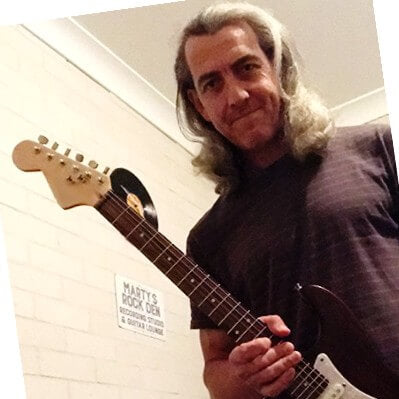Firebird® style Guitar Kit Review
The Gibson Firebird® has to be one of the more unusual yet visually appealing guitar body shapes ever created. And, while commonly associated with blues guitarists such as Johnny Winter, the Firebird® is arguably one of the more versatile offset-body electric guitars available.
The history of the Firebird®
The Gibson Firebird® has a more interesting past than most and unlike many iconic guitars e.g. the Jaguar® has remained in production since first being released in 1963. And, while never achieving the sales volume of the Les Paul® or SG® the Firebird® remains popular, due to its unique design and versatility with regard to the musical genres it calls home.
Design
The Firebird® was first conceptualized and designed to draw customers back from Fender®. Gibson had started losing ground to Fender in the 1960s after initial success with the Gibson Les Paul® in the 50's due to the number of artists endorsing Fender products.
Gibson's answer to this problem was to offer a radically different guitar body shape, which beginning in the 50s with the Flying V® and Explorer® was followed up in the early '60s by the Firebird®, perhaps the most radical design of all.
Ray Deitrich
The Firebird® body shape was the brainchild of Ray Deitrich (renowned car body designer responsible for the design of checker cabs and founder of Dietrich Inc.) who at the request of the president of Gibson® at the time (Ted McCarthy) was lured out of retirement in 1950 to design the original Firebird® body shape.
As can be seen in the image below. It’s not difficult to spot the similarities between the clean lines of the guitar and car tail fins from the ’50s and ’60s.
Gary Moore
The Firebird was nothing if not a unique looking electric guitar. Deitrich had been brought in, not only to offer a new take on the electric guitar body but also to do so in a commercially viable manner, something the earlier Gibson Explorer® and Flying V® (also radical departures in design) had failed to do, at least up to that point in history.
Looking something like a reverse 'Explorer' with rounded edges the Firebird® came to be commonly referred to as a ‘reverse’ guitar featuring a wider lower bout (typically guitars featured a larger top bout e.g. the Fender Stratocaster®), banjo style tuners mounted to the underside of the headstock (now commonly referred to as a reverse headstock), a laminate neck consisting of Mahogany and Walnut, and small footprint ‘mini’ humbucker pickups (the 1965 model was also available with single-coil P90 pickups also).
If that wasn’t enough, The Firebird® also featured a solid body with neck-thru design (the neck timber extends the full length of the body), often credited for emphasizing sustain.
Firebird® Models
Gibson® offered four variations on the original Firebird® when first released, the I, III, IV and VIII all featuring the neck-thru design.
In typical Firebird® fashion the naming convention was anything but conventional, using the Roman Numeral system:
- The "I" featured a single, mini-humbucking pickup and single volume and tone control.
- The "III" featured two mini-humbuckers, plus 2 volume and 2 tone controls and a 3-way pickup selector.
- The "V" offered the same features as the III along with a Tune-O-Matic bridge and tailpiece and trapezoid inlays.
- The "VIII" featured the same configuration as the "V" along with gold hardware, binding on the fretboard and trapezoid inlays.
Following the threat of legal action from Fender, claiming the Firebird’s® body was a violation of Fender's copyright along with claiming the headstock design was too similar to the Fender Stratocaster®, Gibson also produced a non-reverse Firebird®, partly due to the threat from Fender and partly due to poor initial sales.
The non-reverse Firebird’s® production run was short-lived, available for four years from 1965 through to 1969, although now available again as a reissue.

The non-reverse model featured regular mounted tuners, a set neck, as opposed to the neck-thru design utilized on the standard Firebird® and larger humbucker pickups. While obviously subjective the non-reverse model was a far cry from the unique lines of the original Firebird®.
Notable Firebird® Players
Equally at home playing hard rock, blues, punk or country the list of artists below who play or have played the Firebird during their career demonstrates the versatility of the instrument.
- Johnny Winter
- Paul McCartney (The Beatles)
- Joe Bonamassa
- Clarence "Gatemouth" Brown
- Steve Clark (Def Leppard)
- Steve Jones (Sex Pistols)
- Eric Clapton
- Brian Jones (Rolling Stones)
- Ronnie Wood (Rolling Stones)
- Joe Perry (Aerosmith)
- Paul Stanley (Kiss)
- Warren Haynes (Allman Brothers Band)
- Phil Manzanera (Roxy Music)
- Gary Moore
- Dave Grohl (Foo Fighters)
Build your own offset DIY guitar using one of these kits: Offset Guitar Kits

